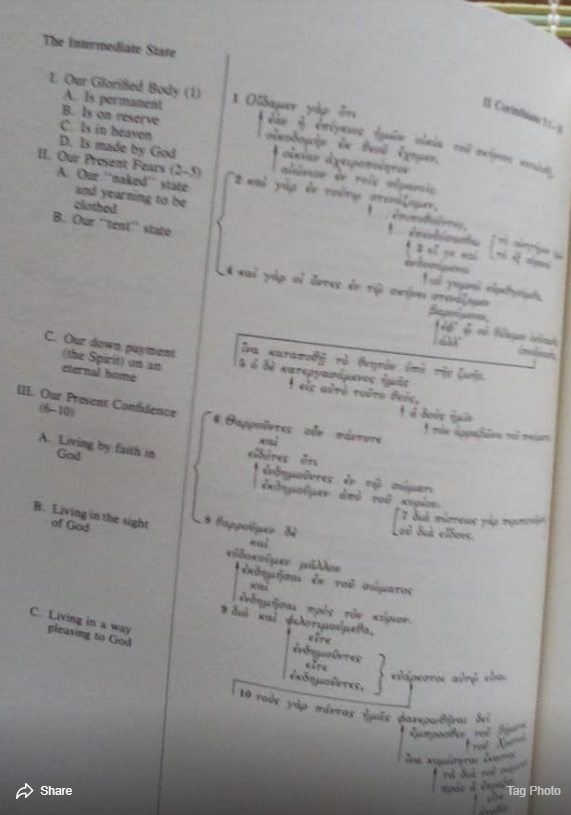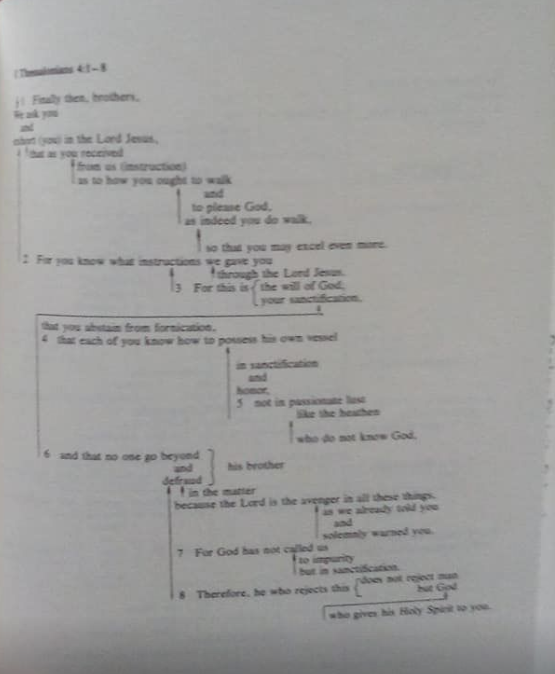RamistThomist
Puritanboard Clerk
Kaiser, Walter C. Toward and Exegetical Theology: Biblical Exegesis for Preaching & Teaching. Grand Rapids, MI: Baker Academic, reprint 1998.
This is the greatest “how-to” manual on Greek and Hebrew exegesis. It runs the gamut from basic linguistics to the proper method of outlining a passage. This won’t be a formal review, as the nature of the book is to be savored and imitated.
While Kaiser never directly expounds the Alexandria vs. Antioch debate, he sides clearly with Antioch. He has no mercy on “allegory” (Paul doesn’t count, for what Paul did is not what the early church did). Directly related to this is “single-meaning hermeneutics” (Kaiser 47). Anyone who rejects single-meaning hermeneutics assumes that his/her own work has a single meaning.
“The How-To” of exegesis:
Contextual analysis:
Kaiser recommends looking for the natural paragraph break (71). These could be anything from repeated terms that act as headings, transitional conjunctions/adverbs, rhetorical questions, change in tense and mood, etc.
What about jumping to doctrines or ideas that are later on in biblical history? Kaiser urges caution. We believe in interpreting Scripture by Scripture, but that phrase doesn’t really tell us which Scripture is clearer. Instead of the analogy of Scripture, Kaiser recommends the analogy of antecedent Scripture (82). Let Scripture develop its own story. This is simply a corollary to the claim that the author knew what he was talking about and didn’t know what he wasn’t talking about. We can identify antecedent theology in the text by noting the following:
1) The use of certain terms which have already acquired a special meaning: seed, servant, rest, inheritance (137).
2) Reference to a previous event in the progress of revelation
3) Reference to previous quotations.
4) Reference to the covenants of accumulating promises.
In other words, the canonical center of the bible is “God’s word of blessing...or promise...to be Israel’s God and to do something for Israel and through them something for all the nations on the face of the earth” (139).
Syntactical Analysis:
Kaiser recommends using a “block-diagram. Write out each proposition or clause in the natural order of the text. Isolate each syntactical unit on separate lines. Bring the theme proposition out to the left hand margin (right in the case of Hebrew), and indent material which modifies the theme proposition (99). Further, note that sub-points will have a parallel feel to their structure.




This is the greatest “how-to” manual on Greek and Hebrew exegesis. It runs the gamut from basic linguistics to the proper method of outlining a passage. This won’t be a formal review, as the nature of the book is to be savored and imitated.
While Kaiser never directly expounds the Alexandria vs. Antioch debate, he sides clearly with Antioch. He has no mercy on “allegory” (Paul doesn’t count, for what Paul did is not what the early church did). Directly related to this is “single-meaning hermeneutics” (Kaiser 47). Anyone who rejects single-meaning hermeneutics assumes that his/her own work has a single meaning.
“The How-To” of exegesis:
Contextual analysis:
Kaiser recommends looking for the natural paragraph break (71). These could be anything from repeated terms that act as headings, transitional conjunctions/adverbs, rhetorical questions, change in tense and mood, etc.
What about jumping to doctrines or ideas that are later on in biblical history? Kaiser urges caution. We believe in interpreting Scripture by Scripture, but that phrase doesn’t really tell us which Scripture is clearer. Instead of the analogy of Scripture, Kaiser recommends the analogy of antecedent Scripture (82). Let Scripture develop its own story. This is simply a corollary to the claim that the author knew what he was talking about and didn’t know what he wasn’t talking about. We can identify antecedent theology in the text by noting the following:
1) The use of certain terms which have already acquired a special meaning: seed, servant, rest, inheritance (137).
2) Reference to a previous event in the progress of revelation
3) Reference to previous quotations.
4) Reference to the covenants of accumulating promises.
In other words, the canonical center of the bible is “God’s word of blessing...or promise...to be Israel’s God and to do something for Israel and through them something for all the nations on the face of the earth” (139).
Syntactical Analysis:
Kaiser recommends using a “block-diagram. Write out each proposition or clause in the natural order of the text. Isolate each syntactical unit on separate lines. Bring the theme proposition out to the left hand margin (right in the case of Hebrew), and indent material which modifies the theme proposition (99). Further, note that sub-points will have a parallel feel to their structure.
